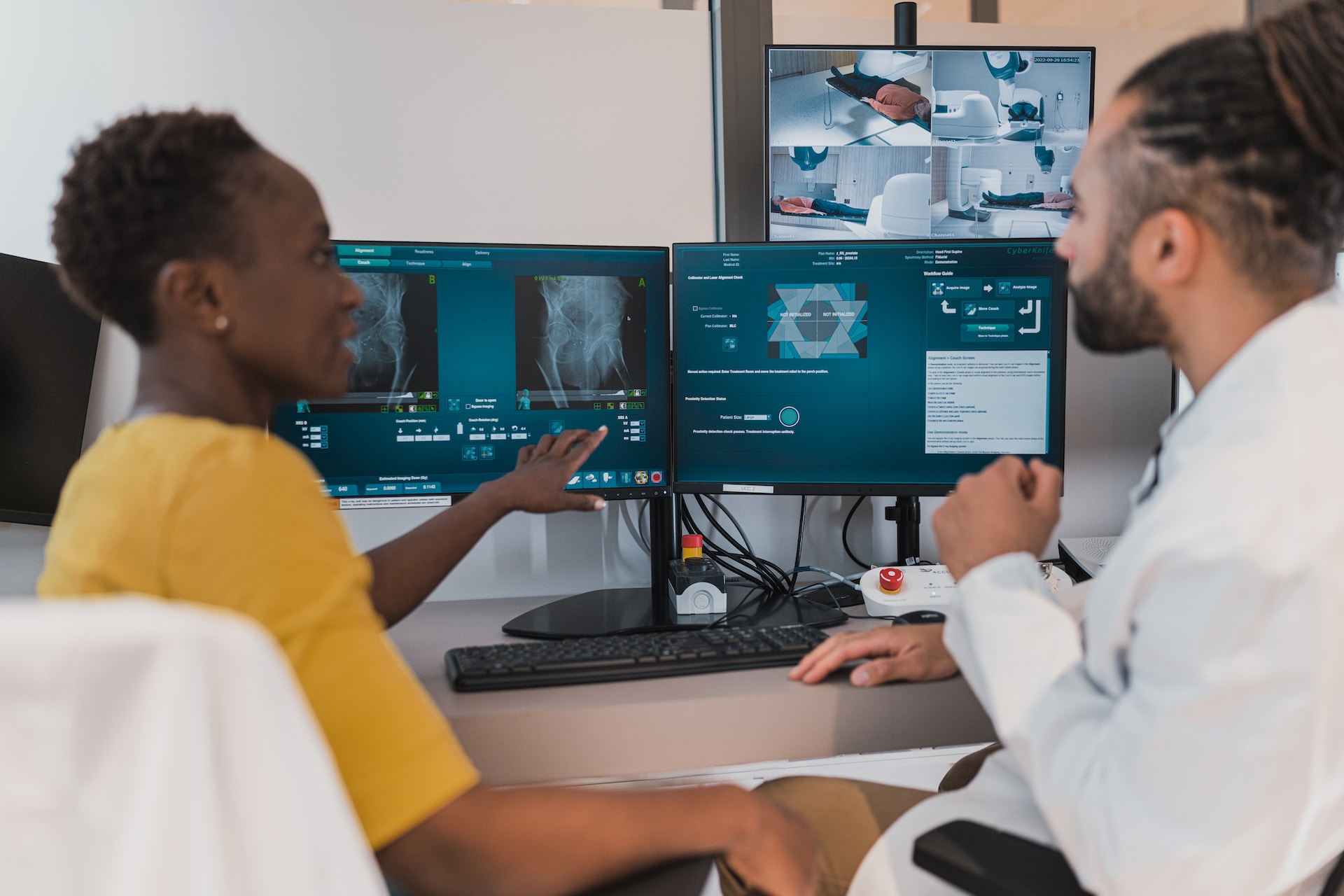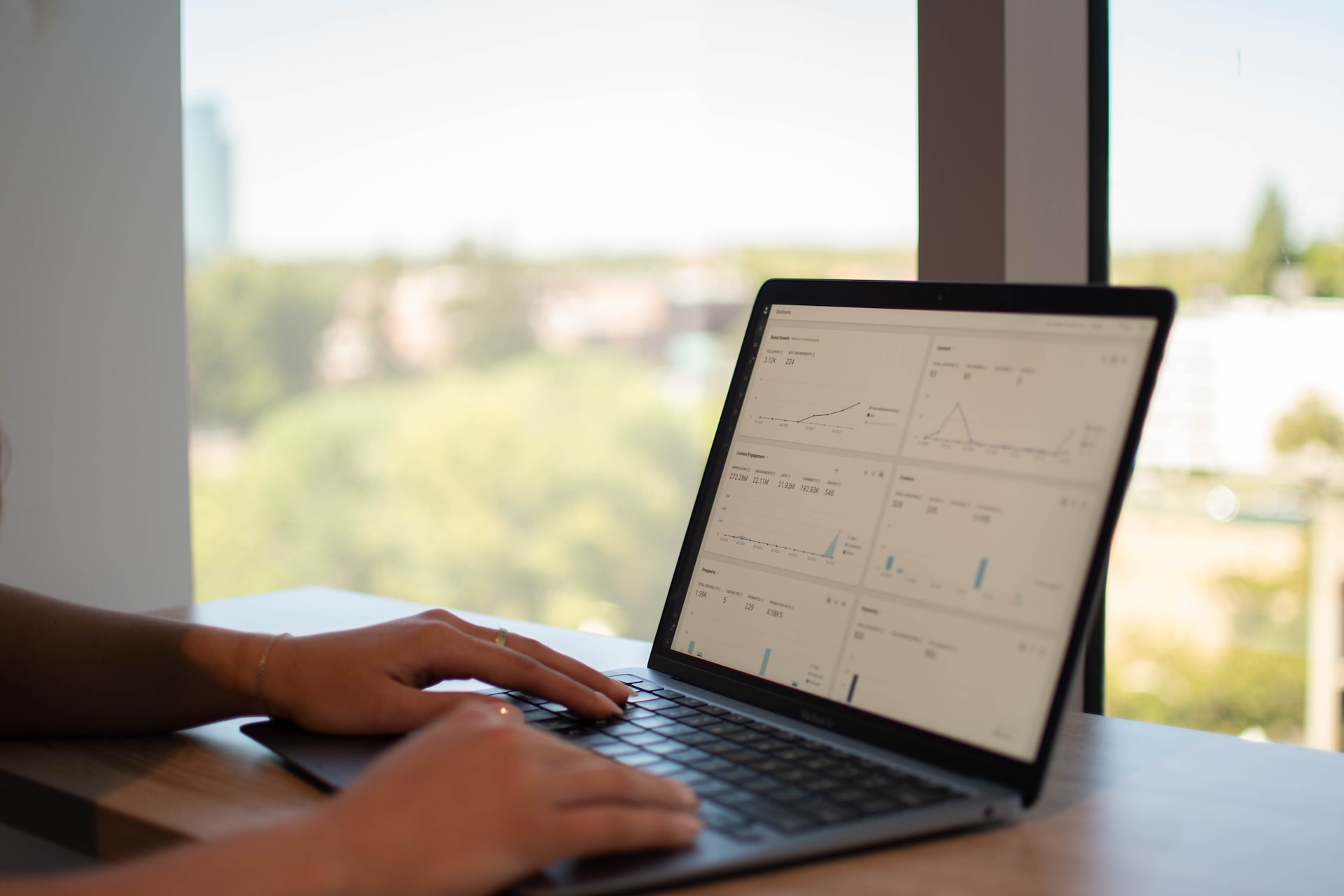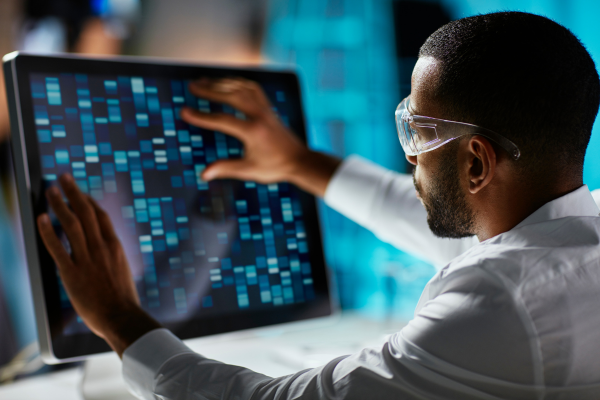Insights
5 Future Trends in Biometrics Shaping the Health and Life Sciences
10 Aug, 20237 minutesAccording to a report published by McKinsey, health and life sciences are dominated by inves...

According to a report published by McKinsey, health and life sciences are dominated by investment in analytics-related technologies. This is particularly true within the world of biometrics, where 45% of organisations make their tech investments primarily within artificial intelligence, machine learning, and computing and digital developments.
Business decisions and biometric data analysis are being empowered by these emerging technologies, enabling organisations across the health and life sciences to scale at a faster pace and larger scale whilst simultaneously enhancing participants’ experiences and care during the clinical trial process.
In this guide, we’ll explore five future trends and data science applications that are shaping strategies within health and life sciences and how these technologies are influencing hiring decisions within the field of biometrics.
Five New Technologies Empowering Biometric Research
The efficiency and productivity of the health and life sciences professionals working in Biometrics are being transformed by emerging technologies such as artificially intelligent, robotic devices and data science applications driven by machine learning algorithms.
But what are these emerging technologies, and how are they helping to supplement the skills of biometric research experts while also improving global healthcare outcomes?
1. Real-Time Monitoring
With the competitive Internet of Medical Things (IoMT) market anticipated to grow to a global value of $187bn by 2028, the widespread adoption of interconnected devices and wearables that collect biometric data seems assured. Smartwatches and fitness trackers are just the first waves of technologies that are able to provide biometric research professionals with the ability to continuously monitor trial participants’ vital signs, sleep patterns, and physical activity.
This dynamic health data means that those working in biometrics can now access and study patterns over extended periods, enhancing the drug development process through a deeper understanding of disease progression, treatment response, and the impact of side effects on patient wellbeing. Comprehensive biometric profiles and the ability to monitor patients remotely will minimise the risk of adverse events and reduce the need for participants to make frequent in-person visits to trial sites. This is one of the major impediments to the successful enrollment and retention of trial participants.
The data science applications of the IoMT and real-time monitoring are immense. Large-scale data collection will allow researchers to aggregate and parse through vast amounts of biometric information, creating opportunities to improve healthcare outcomes and service provision across entire populations and the identification of disease patterns and trends that can be quickly responded to before they are spread too widely.
2. Quality Assurance
Ensuring the efficacy and safety of medicines and medical devices is crucial to health and life sciences. Automated methods of data collection are helping to streamline the quality assurance process, emphasising accuracy and consistency.
By identifying outliers, missing data, and inconsistencies, biometric research professionals can address quality issues promptly, reducing the chance of challenges when seeking drug approval and helping research and development organisations to make reliable, data-driven decisions on where to focus their efforts.
As software becomes more advanced, biometric researchers will have sophisticated data management systems at their disposal, enabling the traceability and security of biometric data throughout its lifecycle and enhancing the sharing of data between organisations without compromising participants’ privacy.

3. Data Processing and Predictive Analytics
Despite tech experts having to find new and creative ways to circumvent the thermal limits of integrated circuits that currently hamper efforts to improve computing power, advances are still being made. One example is IBM’s 2-nanometer chip igniting a flurry of research from organisations across the United States, Japan, and Europe. These technologies will further empower biometric data analysis, allowing for faster processing of complex calculations and the parsing of larger datasets.
These new chip technologies, alongside machine learning and AI algorithms, will play a crucial role in the evolving field of predictive analytics, with professionals working across biometrics able to leverage software to uncover subtle correlations that allow healthcare practitioners to make more accurate predictions of patients’ long-term health.
Advanced predictive analytics and data processing will empower patients, allowing them to access personalised medical interventions and treatment recommendations that take into account their genetics, lifestyle, and environment, having the potential to provide safer, more effective care.
4. Collaborative Robotics
Cobots, or collaborative robotic devices, might not initially seem like a technology suited to the data-heavy work of professionals working in biometrics. Despite this, cobots are designed to adapt to a number of tasks, from utilising sensors and cameras to handling samples and operating measurement devices during the clinical trial data collection process.
Through customisation and programming, cobots will be able to standardise testing and data collection, reducing the potential for human error or variations. In laboratory settings, cobots assist researchers with preparing samples for routine experiments, helping to enhance workflow efficiency and reducing the need for technicians to carry out the repetitive, preliminary manual tasks that generate the insights which guide biometric research professionals in their analysis.
At the same time, with an emphasis on safety and ergonomics within cobot design and development, these emerging technologies will help to ensure participant and staff safety within the clinical trial environment, reducing the risk of contamination in trials which produce clinical waste or utilise hazardous materials.
5. Virtual Reality
VR technologies can potentially enhance biometric research by providing health and life sciences experts with interactive ways to train for data analysis tasks and for trial participants to immersively report on their qualitative trial experiences.
From simulating complex biological processes to visualising large datasets, virtual reality technologies can help researchers to better understand human physiology and aid in tasks of biometric data analysis. Those working in biometrics will be able to create virtual experiments with precise control over variables, backing up real-world research where it can be difficult to manipulate certain conditions or access specific populations.
In trials involving research on human participants, VR technologies are enhancing engagement and compliance with study guidelines. By creating accessible experiences, biometrics research professionals can capture more comprehensive and holistic data, whilst the programmable nature of virtual reality means that data can be collected in a controlled environment that encourages natural interaction.

How These Technologies are Influencing Hiring within Biometrics
The technologies we’ve discussed, from AI and machine learning to the Internet of Medical Things and collaborative robotics, will significantly impact hiring plans within Biometrics.
Given the increasing complexity of the data being produced and analysed within the clinical trial environment, the demand for skilled biometric data analysis and AI specialists is growing. A lack of high-quality data sources means that businesses are focusing on attracting and retaining data and analytics experts and the leaders that can empower them to succeed.
Within the next five years, AI within the clinical trials market is anticipated to reach a global value of around $4.8bn, meaning that organisations that fail to attract professionals to leverage these emerging technologies could risk lacking the edge to compete.
At the same time as this need for technologically proficient personnel, biometric research continues to require individuals that possess domain knowledge within the health and life sciences environment. As a result, hiring managers focus on candidates integrating interdisciplinarity into their skill sets. They don’t just want expertise in biostatistics or computer science but the ability to bridge the gap between technology and the clinical research environment, ensuring that productivity and efficiency remain high and that trials are able to remain within budget and on schedule.
The shift towards automation and the emphasis on adaptability and continuous learning mean that hiring plans within biometrics are shifting to accommodate analytical and strategic roles. Organisations across the health and life sciences sphere are searching for biometric research professionals that can manage and optimise automated processes, ensure data quality, and smoothly integrate new technologies into existing workflows. As a result, a growth mindset and the ability to learn quickly are highly prized within the biometric data analysis and research environment.
These technologies are enhancing the ability for mixed teams to collaborate, regardless of their function. Data science hiring in 2023 is foregrounding teamwork and strong interpersonal skills, with the ability to effectively communicate with multiple stakeholders on a project setting candidates apart from their competitors in the recruitment process.
If you’re interested in learning more about the impact of new technology within the health and life sciences, or you’re searching for further information on cutting-edge trends within biometrics, see our article on Data Science and Its Impact On the Life Sciences Industry for insights into how these exciting developments are revolutionising the way drugs are developed and healthcare is administered.
Key Findings
The advancements in emerging technologies within the field of biometrics are reshaping hiring plans and strategies in the health and life sciences industry. The increasing investment in analytics-related technologies, such as artificial intelligence, machine learning, data processing, and collaborative robotics, have propelled organisations to seek proficient data scientists, AI specialists, and personnel with technological proficiency and communication skills.
The future trends discussed in this guide, including real-time monitoring, predictive analytics, and virtual reality, propose to revolutionise biometric research and enhance participants’ experience within the clinical trials environment. These technologies demand a multidisciplinary skillset that combines expertise in biometrics with knowledge of the health and life sciences, meaning that organisations will need to attract and retain these professionals or risk falling behind within this rapidly evolving field.
By strategically incorporating these emerging technologies into their hiring strategies, organisations across the field of biometrics can ensure they have the talent needed to drive innovation, improve research outcomes, and contribute to the advancement of healthcare outcomes.
Experts in Recruiting Biometric Research Professionals
With a global presence, the specialist recruitment consultants at Warman O’Brien are here to support ambitious candidates and business leaders looking to scale up their operations alike. We regularly present at industry conferences exploring cutting-edge technology and data science applications within the health and life sciences, allowing us to build a network of leading organisations and an extensive talent pool.
No matter how complex your requirements are, contact us today.



